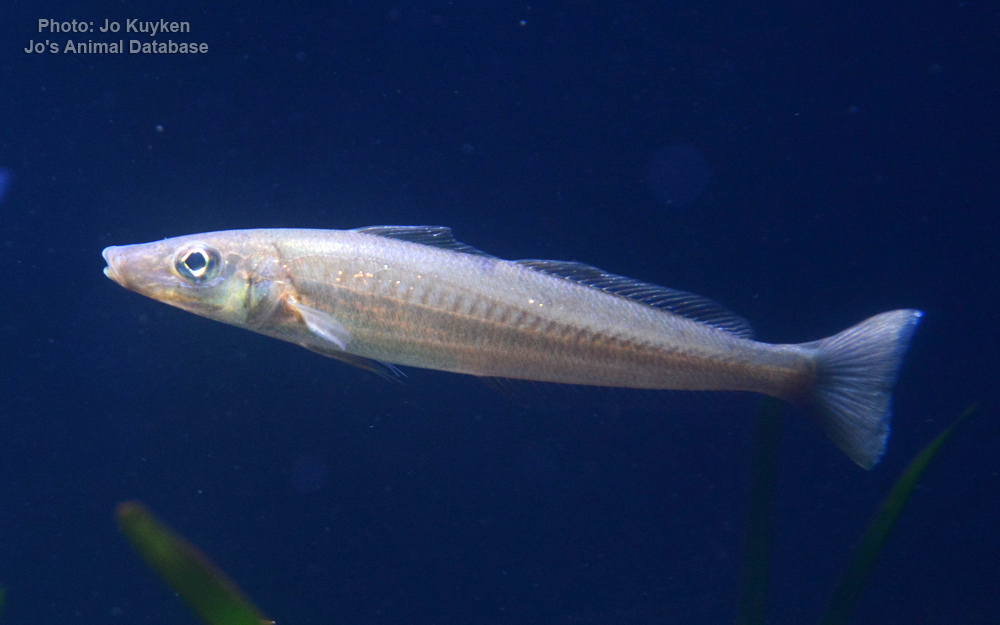Japanese sillago
(Sillago japonica)

Image source: Jo's Animal Database
Classification
General data
The Japanese whiting (Sillago japonica), also known as the Japanese sillago or Shiro-gisu, is a common species of coastal marine fish belonging to the smelt-whiting family, Sillaginidae. As suggested by its name, the Japanese whiting was first recorded from Japan in 1843 but has subsequently been found to extend to Korea, China, and Taiwan.
The species inhabits a variety of shallow water habitats where it preys on a variety of crustaceans as well as polychaetes, bivalves, and small fish. They spawn between June and October and are taken in large quantities during this period by fishermen. One of the most abundant species of fish around Japan, they make up a large percentage of the commercial catch.
s with most of the genus Sillago, the Japanese whiting has a slightly compressed, elongated body tapering toward the terminal mouth. The body is covered in small ctenoid scales extending to the two rows of cheek scales and head. The first dorsal fin has 11 spines and the second dorsal fin has 1 leading spine with 21 to 23 soft rays posterior. The anal fin is similar to the second dorsal fin but has 2 spines with 22 to 24 soft rays posterior to the spines. Other distinguishing features include 70 to 73 lateral line scales and a total of 35 vertebrae. The species has a known maximum length of over 30 cm (11.8 in).
Like all species of sillaginid, the swim bladder is the most dependable diagnostic feature. Japanese whiting has a swim bladder with a single, long posterior extension that tapers to a slender point. The anterior end of the organ has three long median projections, with the central extension being the longest.
The colour of the fish is a greenish grey above with the dorsal region of the head darker and whitish on the underside of the fish. The anterior and posterior dorsal fins are hyaline, with the first few membranes of the spinous dorsal fin dusted in tiny brown spots. The anal, ventral, and pectoral fins are also hyaline, with the pectoral having a greenish upper margin and base. The caudal fin is whitish with dark margins.











